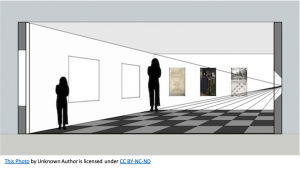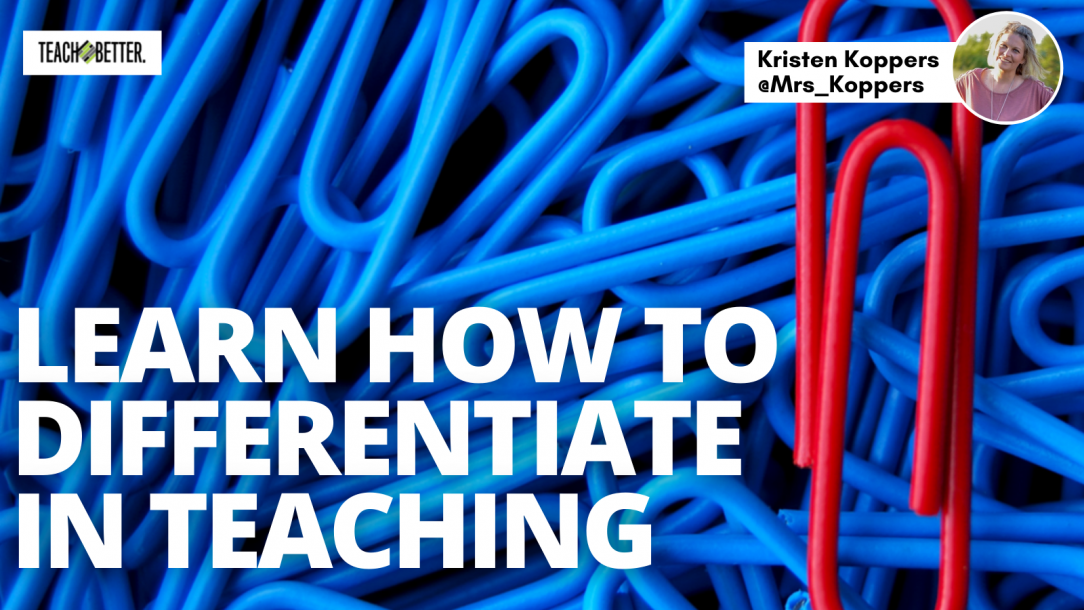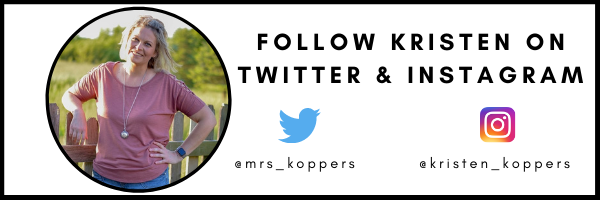TL;DR:
- Rather than modify assignments to differentiate instruction, change how we teach to ensure students understand the material.
- Not all students learn in the same way. We need to recognize when to change how we teach the lesson.
- We need to know our students and support them.
- With differentiated instruction, it is possible to meet the learning styles of all students. One size does not fit all.
The words differentiated instruction often come up in teaching. Many teachers automatically think about modifying assignments for students rather than modifying how we teach. With having anywhere between 30 – 150 students daily, modifying assignments can be tiresome for teachers and possibly the students. It’s time to change from learning ‘what’ we teach to ‘how’ we teach.
I started to focus on making sure that my students understood the material rather than completing the work. First, let me explain what I mean by ‘completing’ the work. It’s possible that some students will not have the work completed. Just submitting an assignment does not mean a student understands the material. In fact, it proves just the opposite.
Throughout the year, teachers tend to know how their students work and what they can accomplish. We know that each student CAN and WILL learn if given the opportunity. We also know that teaching cannot be a ‘cookie cutter’ approach as students learn in different ways. By changing how one teaches, it is possible that all students can learn without modifying assignments.
With differentiated instruction, it is possible to meet the learning styles of all students. We must remember that one size does not fit all. Click To TweetChange ‘HOW’ I Teach
Several students were not focused during class. I thought they were just not completing the work and decided to not use their class time wisely. It wasn’t until one student came up to me after class. She stated that she did not understand what she was supposed to do and was afraid to ask questions. That was the moment that I realized that truly all students do not learn the same way. Instead of focusing on teaching one ‘standard’ way, I modified the way I taught my lessons.
The conversation with the student the previous day got me to think. I retaught the lesson differently. Collecting the assignment at the beginning of the hour may not have been a good idea. It might be incomplete or not completed at all. I have always believed in quality than quantity, even if it took me longer to teach a lesson. The next morning instead of looking at 28 confused faces that day, I had them hold onto their assignments as I re-explained the lesson in a different way. It was not about changing the assignment but rather changing how to complete the assignment.
Learn ‘HOW’ to Differentiate the Work
Learning how to differentiate learning starts with modifications on assignments for all students. Can you imagine trying to modify one assignment for 28 students? In order to learn how to use differentiated instruction in the classroom, it all begins with knowing your students.
With all the different ways to use differentiation in the classroom, I wanted to share my successes and not so successes with others. I wrote the book, Differentiated Instruction in the Teaching Profession: Innovative Ways to Change How We Teach in 2019. The first chapter focused on “Change the Way Students Learn.” As an ELA secondary education teacher, we read both informative pieces and fictional novels. I wanted to bring the novel to ‘life’ with my students instead of creating a character chart or mapping a plot structure on the board. (Remember, I teach high school so it was important for me to gain the interest of all my students.)
Learn ‘HOW’ to Differentiate: Example Lesson
Reading the novel Slaughterhouse Five by Kurt Vonnegut was my chance to change how it was taught. The novel was written in such an odd way that it went from first-person point of view to a third-person point of view. The reader would have to understand the change in narration. The author’s perspective is introduced on why it was written. This gave the novel, itself, a back story to the content. For students to understand the change in narration from first-person to third-person, I had to think of a way they were able to visually see it.
For this to work, one student was the first-person point of view, another student was the third-person point of view, and the third student was the author while the rest of the students were the ‘readers.’
Student:
#1 (First person point of view) – stands to the right of student 3
#2 (Third person point of view) – stands to the left of student 3
#3 (Author’s perspective) – stands in the middle of students 1 and 2
[scroll down to keep reading]

At one point, the author begins the novel with his voice introducing the background to the novel (student 3). Chapter 2 began with the focus shifted from Vonnegut as the author (student 3), to possibly Vonnegut as a character (student 2) as he inserted himself throughout the novel. Confused yet? The students were at this point. They wanted to know what happened to student 1’s point of view. The first-person narration was strategically placed throughout the novel where Vonnegut used words like: this is me, I was there. While the author controlled the writing in the novel, he also controlled the different points of view.

Another way of explaining how the novel goes from first-person point of view to third-person point of view is through inclusion.
One’s perspective changes in how we see certain objects. The image above illustrates how the author views perspective. The person on the right in the image shows a closer view (making the person seem larger than she really is). The person in the left of the image indicates a person who is farther away when they could be the same. The author is the perspective of where the lines are coming from on the right-hand side of the picture. The author’s viewpoint changes as he goes from author to character.
One Size Does Not Fit All
While it seems, at times, that the instruction may be at a slower pace than normal, students are aware that they can move ahead without the direction of the teacher. What we need to remember as educators is that we need to support the success of our students. With differentiated instruction, it is possible to meet the learning styles of all students. We must remember that ‘one size does not fit all.’
ABOUT KRISTEN KOPPERS
Kristen wrote the book Differentiated Instruction the Teacher Profession as a way to share her ideas of how to use Differentiated Instruction inside the classroom. As an educator, it is important to find innovative ways to meet the needs of her students. Kristen is often on Twitter (@Mrs_Koppers) participating in chats and collaborating with other educators. It’s easy to share DI ideas on Twitter (#DITeaching).



